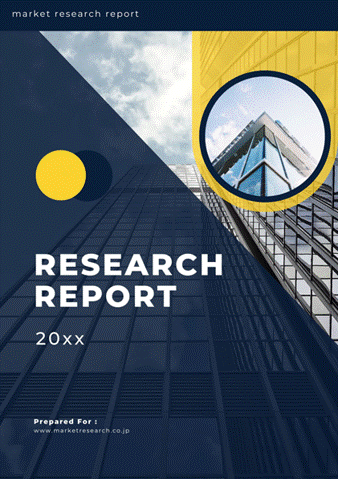 | • レポートコード:MRC2304K039 • 出版社/出版日:Mordor Intelligence / 2023年1月23日 • レポート形態:英文、PDF、167ページ • 納品方法:Eメール(受注後2-3営業日) • 産業分類:食品 |
| Single User | ¥712,500 (USD4,750) | ▷ お問い合わせ |
| Corporate License | ¥1,312,500 (USD8,750) | ▷ お問い合わせ |
• お支払方法:銀行振込(納品後、ご請求書送付)
レポート概要
| Mordor Intelligence社の本調査資料では、世界のホワイトバイオテクノロジー市場規模が、予測期間中(2022年-2027年)にCAGR 15.14%で成長すると予測しています。本資料では、ホワイトバイオテクノロジーの世界市場について多角的に調査し、イントロダクション、調査手法、エグゼクティブサマリー、市場動向、種類別(バイオ燃料、バイオマテリアル、バイオケミカル、工業用酵素)分析、用途別(化学品、医薬品、食品&飲料、飼料、その他)分析、地域別(北米、ヨーロッパ、アジア太平洋、南米、中東・アフリカ、アメリカ、カナダ、メキシコ、ドイツ、イギリス、フランス、スペイン、イタリア、中国、日本、インド、オーストラリア、ブラジル、アルゼンチン、南アフリカ、サウジアラビア)分析、競争状況、市場機会・将来の動向など、以下の内容を記載しています。なお、参入企業情報として、EUCODIS Bioscience GmbH、DuPont、Koninklijke DSM NV、BASF SE、Evonik Industries AG、Lonza Group Ltd、Laurus Labs、Corbion NV、Novozymes、Archer Daniels Midland Companyなどが含まれています。 ・イントロダクション ・調査手法 ・エグゼクティブサマリー ・市場動向 ・世界のホワイトバイオテクノロジー市場規模:種類別 - バイオ燃料の市場規模 - バイオマテリアルの市場規模 - バイオケミカルの市場規模 - 工業用酵素の市場規模 ・世界のホワイトバイオテクノロジー市場規模:用途別 - 化学品における市場規模 - 医薬品における市場規模 - 食品&飲料における市場規模 - 飼料における市場規模 - その他用途における市場規模 ・世界のホワイトバイオテクノロジー市場規模:地域別 - 北米のホワイトバイオテクノロジー市場規模 アメリカのホワイトバイオテクノロジー市場規模 カナダのホワイトバイオテクノロジー市場規模 メキシコのホワイトバイオテクノロジー市場規模 … - ヨーロッパのホワイトバイオテクノロジー市場規模 ドイツのホワイトバイオテクノロジー市場規模 イギリスのホワイトバイオテクノロジー市場規模 フランスのホワイトバイオテクノロジー市場規模 … - アジア太平洋のホワイトバイオテクノロジー市場規模 中国のホワイトバイオテクノロジー市場規模 日本のホワイトバイオテクノロジー市場規模 インドのホワイトバイオテクノロジー市場規模 … - 南米のホワイトバイオテクノロジー市場規模 ブラジルのホワイトバイオテクノロジー市場規模 アルゼンチンのホワイトバイオテクノロジー市場規模 … - 中東・アフリカのホワイトバイオテクノロジー市場規模 南アフリカのホワイトバイオテクノロジー市場規模 サウジアラビアのホワイトバイオテクノロジー市場規模 … ・競争状況 ・市場機会・将来の動向 |
The white biotech market is projected to register a CAGR of 15.14% during the forecast period (2022-2027).
The COVID-19 pandemic significantly impacted the white biotechnology market in terms of innovation in the pharmaceutical industry, which indicates a profitable market growth in the category. The rising consumer demand for green chemicals, majorly in developed regions like North America and Europe, is willing to pay a higher price or a green premium for numerous renewable products, which is expected to push manufacturers to employ white biotechnology processes instead of traditional chemical manufacturing. The rising need from various consumer industries, including automotive and consumer goods, to meet the sustainability targets is expected to fuel technology demand over the forecast period.
Industrial biotechnology or white biotechnology is one of the most promising approaches to pollution prevention, resource conservation, and cost reduction. It is often referred to as the third wave in biotechnology. The use of white biotechnology can reduce carbon dioxide emissions by as much as 50%, energy consumption by 20%, and water consumption by 75%.
White Biotech Market Trends
Increasing Consumer Demand for Products with Low Environmental Impacts
Consumers are increasingly making purchasing decisions based on environmental considerations. Such buying patterns also signal retailers and manufacturers that factors in addition to quality and price are important, hence boosting the demand for bio-based or sustainable products. Bio-based products have the potential to save on limited fossil resources, reduce greenhouse gas emissions, and offer high bio-degradability and full composability. Consumer behavior, especially in Europe and North America, is increasingly affected by green product qualities, and recent research shows consumers’ willingness to pay a premium for more sustainable products. Thus, as environmental awareness grows, the demand for products from clean, green manufacturing processes, including bio-based products, is likely to grow. DuPont Green Living conducted a survey; in the survey, more than 63% of consumers are said to be familiar with green products, and of those, 85% have confidence that they are better for the environment. These consumers believe bio-based ingredients make not only a product green but also provide a better performance, which is critical to long-term adoption.
Asia-Pacific is the Fastest-growing Region in the White Biotech Market
China’s biotech industry has grown rapidly over the past decade, and it is dominated by medical technologies and biologics. The growth is escalated by the biotechnologically altered food ingredients in the market. Thus, players are strategically investing in local companies. For instance, in 2021, BASF Venture Capital (BVC) invested in Bota Biosciences Ltd (Bota Bio), an industrial synthetic biotech company located in Hangzhou, China, which develops next-generation biotechnology platforms, enabling sustainable and economical production of high-value products for a broad array of industrial applications, like sweeteners, vitamins, personal care, or crop protection products. In addition to the above-mentioned industrial applications, white biotech has paved great opportunity in Japan’s functional food and beverage segment due to the increased consumer inclinational toward food and beverage with high nutritional claims. Thus, biochemicals and industrial enzymes are paving great opportunities in the country’s food and beverage domain.
White Biotech Market Competitor Analysis
The white biotech market is highly competitive, with a strong presence of regional and global players. The demand is mostly driven by consumer awareness of sustainability and efficient productivity. Thus, the players operating in the market are trying to position themselves according to the demographic group. Some prominent players, like Corbion, ADM, and DuPont, have been focusing on developing new and innovative products by targeting the new formulation for the market and engineering the various unexplored microorganisms in the market.
Additional Benefits:
- The market estimate (ME) sheet in Excel format
- 3 months of analyst support
1 INTRODUCTION
1.1 Study Assumptions and Market Definition
1.2 Scope of the Study
2 RESEARCH METHODOLOGY
3 EXECUTIVE SUMMARY
4 MARKET DYNAMICS
4.1 Market Drivers
4.2 Market Restraints
4.3 Porter’s Five Forces Analysis
4.3.1 Threat of New Entrants
4.3.2 Bargaining Power of Buyers/Consumers
4.3.3 Bargaining Power of Suppliers
4.3.4 Threat of Substitute Products
4.3.5 Intensity of Competitive Rivalry
5 MARKET SEGMENTATION
5.1 By Type
5.1.1 Biofuels
5.1.2 Biomaterials
5.1.3 Biochemicals
5.1.4 Industrial Enzymes
5.2 By Application
5.2.1 Chemicals
5.2.2 Pharmaceuticals
5.2.3 Food and Beverages
5.2.4 Feed
5.2.5 Other Applications
5.3 Geography
5.3.1 North America
5.3.1.1 United States
5.3.1.2 Canada
5.3.1.3 Mexico
5.3.1.4 Rest of North America
5.3.2 Europe
5.3.2.1 Germany
5.3.2.2 United Kingdom
5.3.2.3 France
5.3.2.4 Spain
5.3.2.5 Italy
5.3.2.6 Rest of Europe
5.3.3 Asia-Pacific
5.3.3.1 China
5.3.3.2 Japan
5.3.3.3 India
5.3.3.4 Australia
5.3.3.5 Rest of Asia-Pacific
5.3.4 South America
5.3.4.1 Brazil
5.3.4.2 Argentina
5.3.4.3 Rest of South America
5.3.5 Middle-East
5.3.5.1 South Africa
5.3.5.2 Saudi Arabia
5.3.5.3 Rest of Middle-East
6 COMPETITIVE LANDSCAPE
6.1 Most Active Companies
6.2 Most Adopted Strategies
6.3 Market Share Analysis
6.4 Company Profiles
6.4.1 EUCODIS Bioscience GmbH
6.4.2 DuPont
6.4.3 Koninklijke DSM NV
6.4.4 BASF SE
6.4.5 Evonik Industries AG
6.4.6 Lonza Group Ltd
6.4.7 Laurus Labs
6.4.8 Corbion NV
6.4.9 Novozymes
6.4.10 Archer Daniels Midland Company
7 MARKET OPPORTUNITIES AND FUTURE TRENDS
8 IMPACT OF COVID-19 ON THE MARKET